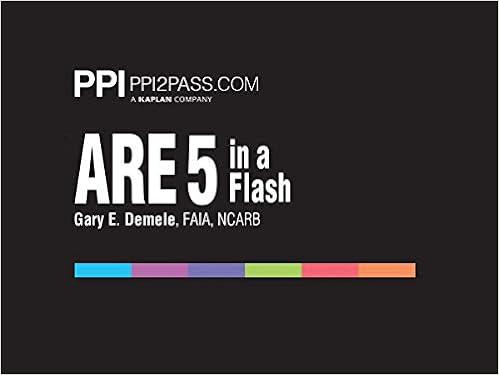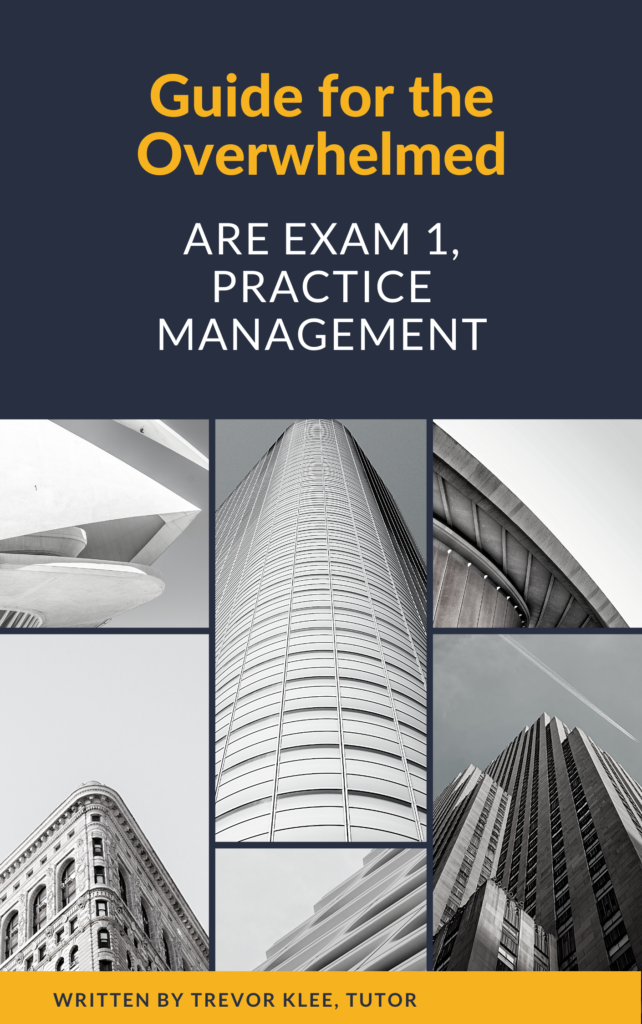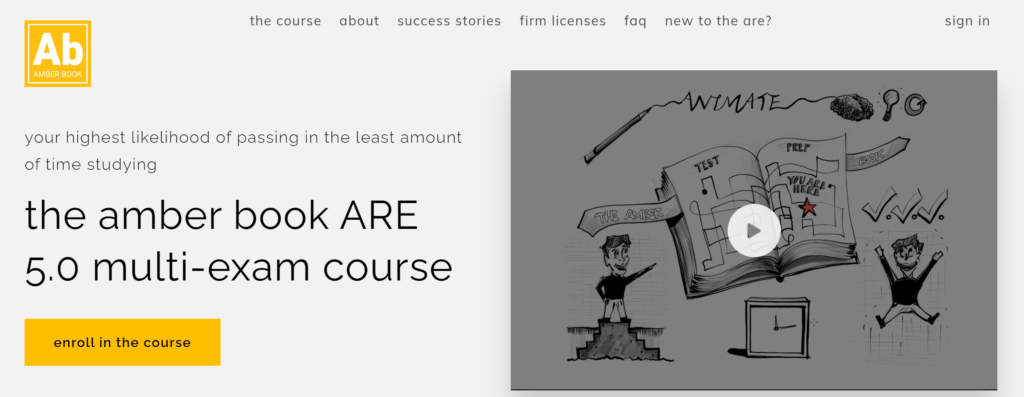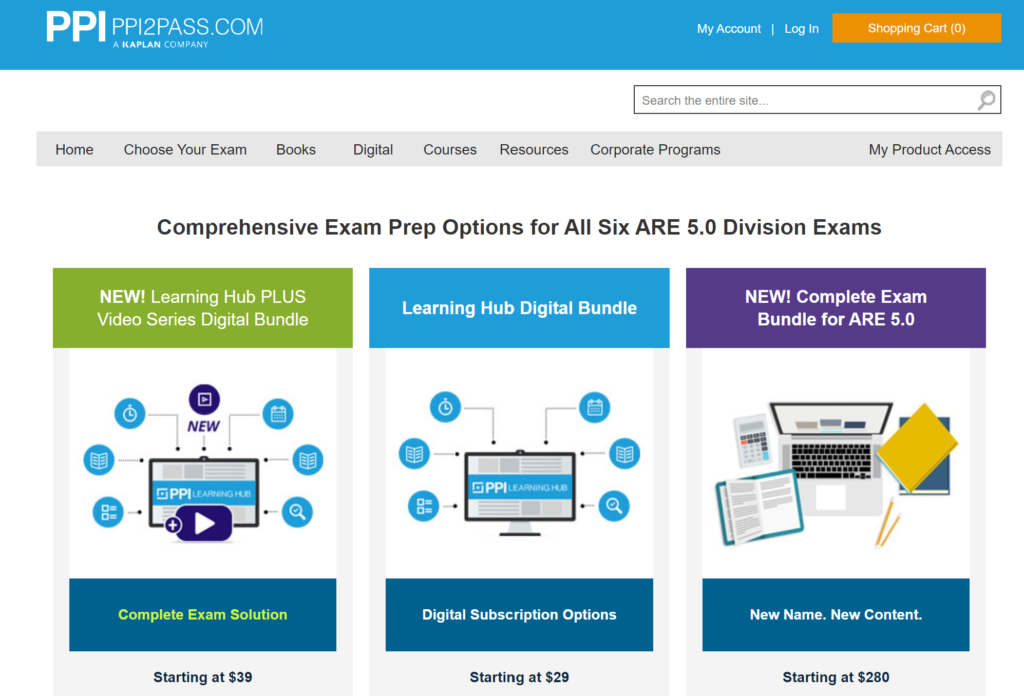Summary
This is a report from Michelle Gonzales from the ARE 5.0 Community.
She failed the exam the first time, then waited 3 months before taking it again.
She recommends using Building Construction Illustrated, Architectural Graphic Standards, National Park Preservation Briefs.
She also highly recommends flashcards (like 21st Night!).
There’s also a long list of specific topics that she recommends, which I’ve included below.
If you want more information, check out my guide on how to study for the ARE Exam 5, Project Planning and Design, or read the original post below.
This is going to be a long one so I apologize in advance!
Took my exam on Monday and passed. Finally got my congratulatory email today so I finally have closure from this long exam process, which began in early spring of 2017.
For PDD, I allowed the three months after my first try and fail to mull over the questions and topics that intimidated or stumped me and actively studied with those in mind specifically.
Study Materials:- I would first call on the books/resources I used to study at Attempt #1 and the ones that I eventually picked up for Attempt #2:
Pre-Attempt #1:
– BCI (Construction) – Read from cover to cover but not with as much intensity as for the second attempt.
– AGS 10th Edition – Lightly read through the first 9 chapters.
– ASC – Lightly reread again after PPD. Was not as helpful as it was for PPD.
– BCI (Codes) and IBC 2012 – Reread. Passed this section in Attempt 1 because of these two resources (ADA experience at the job also proved beneficial.)
– Fundamental of Building Construction Materials and Methods – Read quickly.
– AHPP – Read the section in Chapter 10 as it concerns the project manual and specifications. Passed this section in the first attempt.
– FEMA – Reread Chapters 4 and 5 after PPD.
– Youtube – I will expound further in my attempt 2, since Youtube video sessions happened sporadically throughout my PPD and PDD studying.
Post-Attempt #1 / Pre-Attempt #2:
– BCI (Construction) – Absolutely the most valuable book in this exam. Reread but paid closer attention to details.
– MEEB – A surprising addition to my arsenal this round. I was having problems finding electrical and lighting design information that went in depth enough for me to fully understand. Ended up reading all relevant chapters in MEEB and I don’t regret it. Good for slow learners on the topic but not advisable for people on a time crunch.
– AGS – Took literally one day to browse through this book, since I already highlighted all the relevant stuff the first time.
– Fundamentals of Building Construction…. – Reread. I found it valuable but not invaluable. Some things are covered in other books.
– National Park Services Preservation Briefs – https://www.nps.gov/tps/how-to-preserve/briefs.htm – Found this helpful after seeing some preservation questions pop up in Attempt #1. Focused on cleaning, repairing and replacing masonry, but there are chances that other preservation topics would show up.
– Ballast 4.0 – Read the relevant chapters for PDD, which ended up being a lot and took some time. I’ve had a love-hate relationship for Ballast but I did see some merits in spending time reading it. It tries to comprehensively touch on everything. They even had a bit on historically preserving masonry. It helps to know what to focus on, though. Some of the systems equations are unnecessary.
– Ballast 5.0 Practice Problems – I did not use it as a template for the exam but more as a quick testing of what topics I knew well and what I needed to explore further. I had the Practice Exam book but I didn’t bother to go into that due to time constraints.
– Youtube, e.g. DartmouthX, Hyperfine Architecture , Dilip Khatri, just to name a few – Always helpful to get some online tutoring for structural and MEP systems. Also a good break from extensive reading. There are also some kind souls who have have been compiling their favorite videos. I might do the same when I get the chance.
– Flash cards from all of what I covered in the books that I did not cover again during the second round – I highlight this because I found this as the best method for me to study on the go during transit to and from work. No matter on how much you read, there would be some things that you need to remember for this exam. I used the Chegg Flashcard app for iPhone (not sponsored by them, lol!) I’m not sure if you can get it with Android but I’m guessing there could be other free flash card apps out there like it. The app allowed me to take photos of details and either have them on the question side with a question like “find the water stop”, or on the answer side to a question like “what is a quoin?” Dictation on my phone also made filling out text easier – much quicker than writing actual flash cards. At the end of the process of studying, from PPD to the end of PDD (since PPD still relates to PDD), I had upwards of 1200 flash cards, all separated into different smaller categories (“Electrical”, “Structures”, “Materials”, etc.).
After taking the exam twice, and from what I can remember, I would say imo that it would be important to know the following before you take the exam (without giving away actual exam info, of course):
– Mechanical – Thermal comfort indicators; coordinating around mechanical systems and directing detailed mechanical changes based on the design.
– Plumbing – Coordination of plumbing systems with other systems.
– Electrical and Lighting – Reading line diagrams; knowing different types of bulbs (incandescent, fluorescent, etc.) and their properties (CRI, Kelvin, efficacy, etc.); knowing the appropriate amount of voltage for certain circumstances; zonal cavity method.
– Structures – Knowing seismic and wind design terms; moment and shear equations and how they relate to different design/construction decisions; and consequences to certain design decisions on the structure of the building.
– Partition types for different circumstances, i.e. modifications to conform to acoustical requirements, fire rating, cost, etc.
– Vapor barriers and locations in different climates
– Coordination of different systems and knowing where the responsibilities lie in correcting certain issues.
– Contract documents and administration items that would have been covered in CE and PjM, e.g. questions on changes to project scope and its repercussions.
– Historic preservation
– Flashing, and all about it (location, connections, etc.)
– U- and R-Value calculations (and remembering that one is the inverse of the other)
– Matching details up to the correct conditions.
– How to read a construction set, especially for the case studies. This also includes knowing how to read civil, landscape, MEP and structural drawings, and where certain aspects of the design would be found.
– Cost estimation – There were no resources I found that really capture the kinds of questions I found in these exams. All I could suggest is just make sure you read the questions well, figure out what exactly they are asking for and do the best math that you can. Don’t forget to change to the correct units for your calculations.
That’s my PDD mind dump. I am thankful for all the contributors to the community; I have learned a lot on here. My hope is to give back with this post and possibly help anyone who was struggling like I did during this process.
Good luck and if you fail it, don’t give up!





